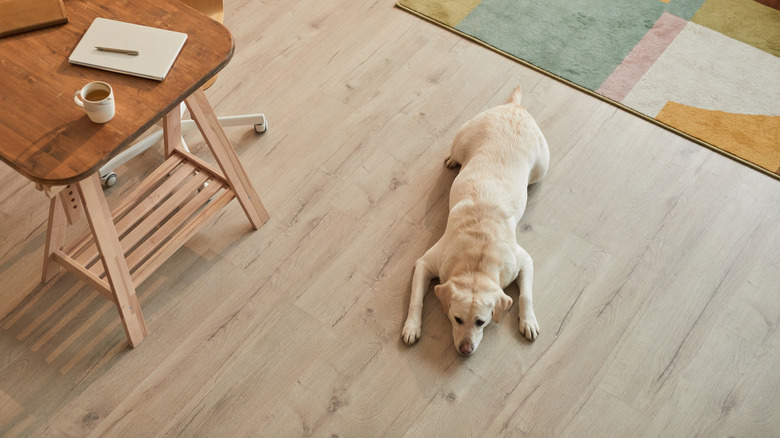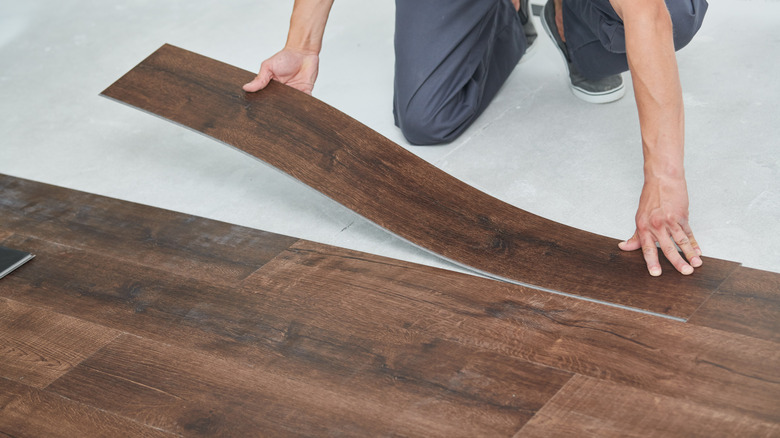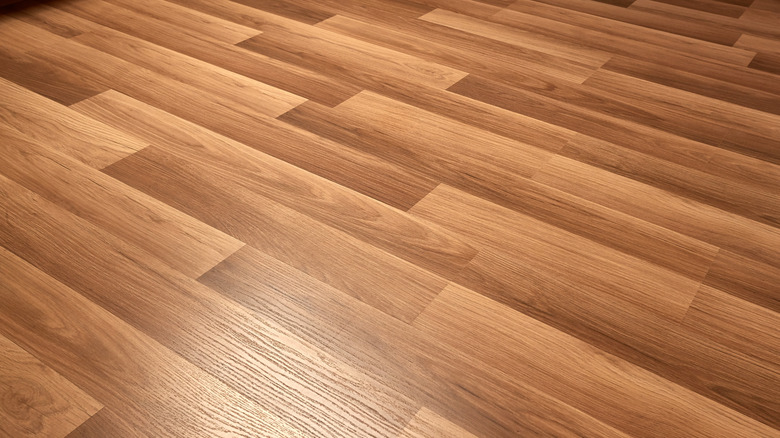Here's What's Causing The Soft Spots On Your Floors
It is guaranteed to make even the most hardened homeowner's heart sink when their hardwood floor feels soft, squishy, or spongy. Wagner Meters places the blame squarely on one of the most likely causes: excessive moisture. The Cold Wire urges a quick response to prevent soft spots from getting worse, and it asserts that while older floors are more vulnerable to developing them, new ones are not immune.
Humidity can harm floors and cause them to soften, as can leaky appliances, a damaged toilet or sink, or even crawlspace condensation. Using too much water when mopping your wood floor can also cause much more harm than it's worth. Alternatively, dusting and sweeping are preferable cleaning methods that won't soften your floorboards.
Water-softened floors have the secondary deleterious effect of causing mold or mildew. A diluted bleach solution can be used to treat contaminated areas, as well as surrounding floorboards or walls. Additionally, asbestos is a cause for concern when severe water damage rears its head and may require professional intervention.
Additional causes of a floor's soft spots
According to All About Materials, a section of soft laminate flooring can result from faulty installation. The layer underneath it might be improperly sized or the wrong type altogether. Whether wood, a laminate material, or tile, a finished floor applied atop a moist or unclean subfloor is at risk. Linoleum floor tiles may soften and bubble if excessive water gathers beneath them.
If a house's foundation settles unevenly, it can damage the subfloor and, subsequently, the floor itself. A gap between layers can form, and the floor above it may develop soft spots. Rain or snow that fails to drain, improper landscape grading, or a shifting foundation can cause similar problems.
The phenomenon of cupping, in which wood floorboards assume a concave shape with edges higher than the middle, is a telltale sign of exposure to water. Cupping can also enlarge spaces between the tiles, thus worsening the problem, or may even pull the plank away from the subfloor. Per From The Forest, the remedy for cupping ranges from using a dehumidifier for minor issues to replacing individual boards or a total replacement in extreme cases. The converse of cupping — crowning — is another defect to watch out for.
Repairing and preventing soft spots
Routine cleaning and inspections help to keep floors hard and shipshape. A soft section requires immediate attention; applying a water-resistant coating every few years is a wise preventative measure.
Before repairing a floor's soft spot, determining what's causing the problem is critical. Allied Foundation emphasizes that a band-aid approach may be futile if one doesn't address the source of the blemish first. Otherwise, even after fixing the flaw, history may repeat itself. Indoor Green Solutions makes this vital point: Before attempting any DIY repairs, examine your homeowner's insurance policy and confirm that coverage will remain in force. Then, if you choose to proceed, formulate a plan by doing the necessary research.
Per The Home Depot, the average price for reinstalling damaged hardwood floor tiles can be as high as $6 per square foot. According to Budget Dumpster, a new subfloor fitting a 300-square-foot room can cost anywhere from $450 to $2,000, excluding new finished flooring. In addition, having to move appliances or fixtures, typically those found in kitchens or bathrooms, will add to your total expenses.


